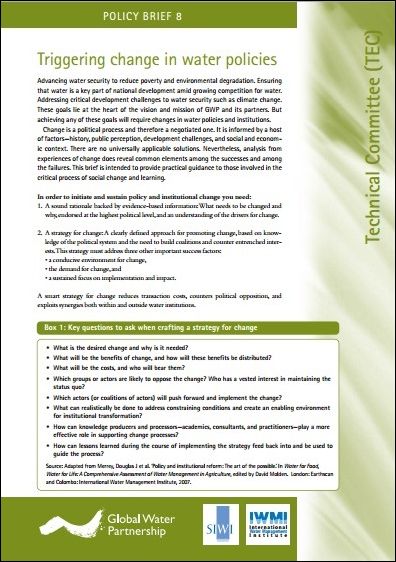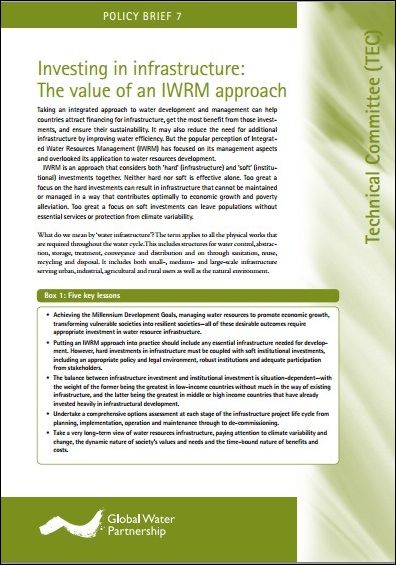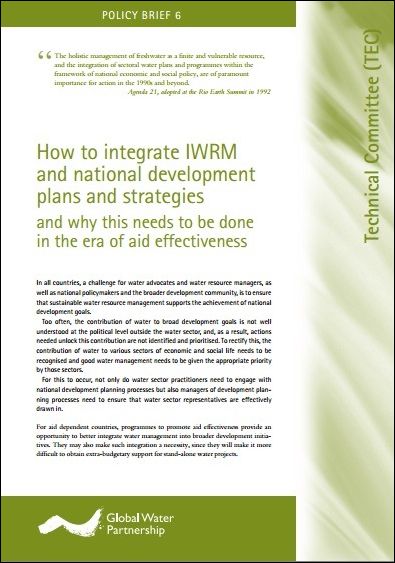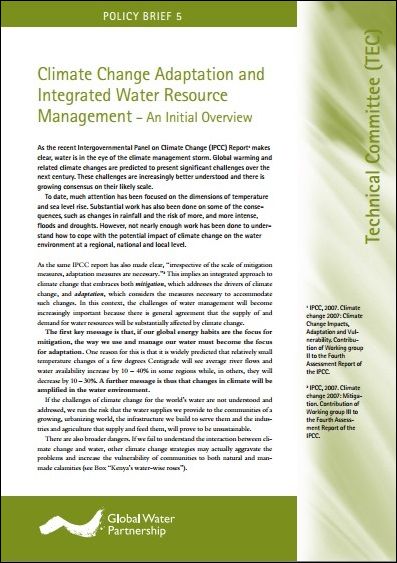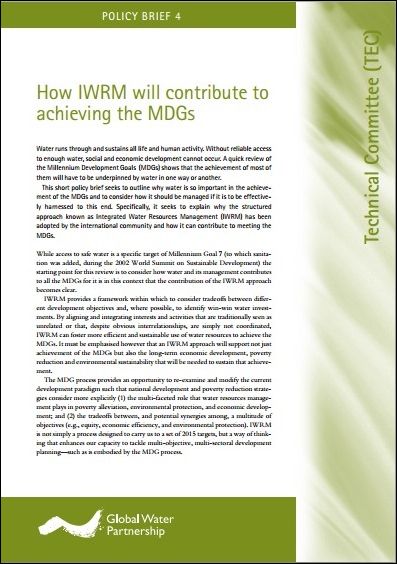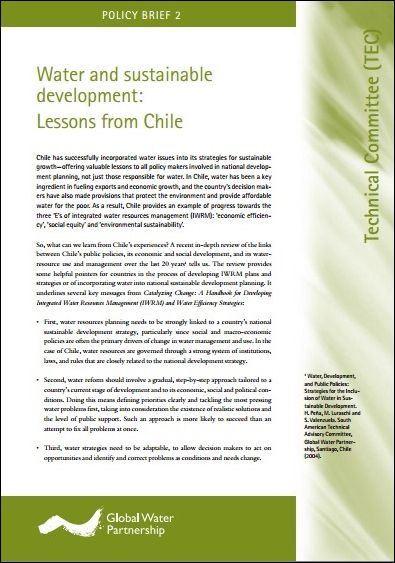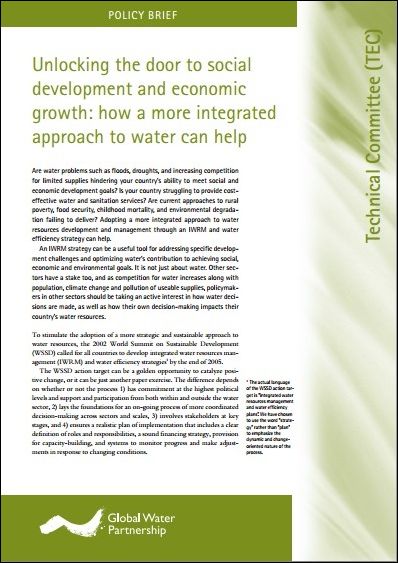|
The Economic Value of Moving Toward a More Water Secure World (2013) |
|
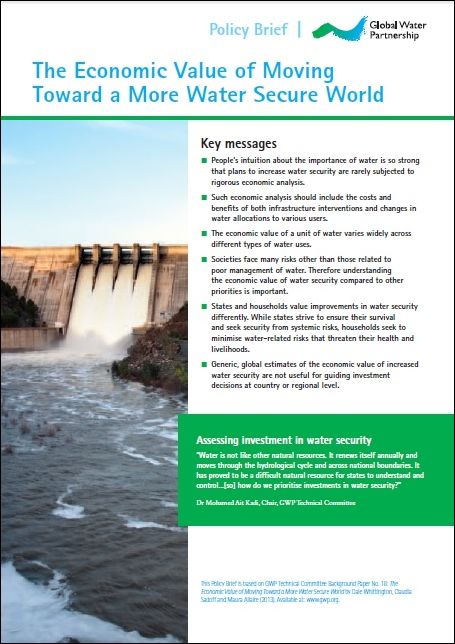 |
This policy brief explains why it is important to understand the economic value of water security compared to other priorities. It also illustrates how the value of water is determined and describes the different perspectives of the states and the households. Read: English |
|
International Law: Facilitating Transboundary Water Cooperation (2013) |
|
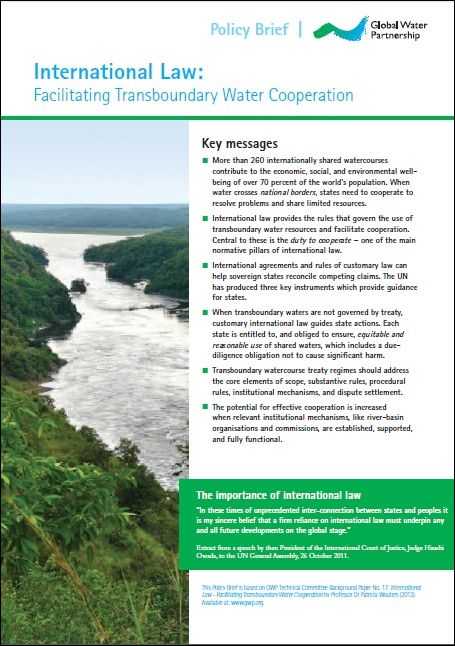 |
The policy brief explains the importance of cooperation between states in order to resolve water problems and share limited resources. Read: English |
|
Integrated Urban Water Management (IUWM): Toward Diversification and Sustainability (2013) |
|
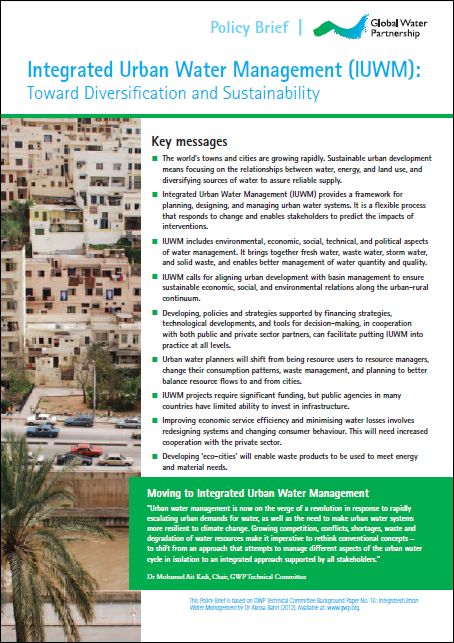 |
This policy brief outlines how IUWM can provide a framework for planning, designing, and managing urban water systems. The brief also encourages policy makers to consider the water cycle as a whole when cities are being developed. Read: English |
|
Rio+20: Water Security for Growth and Sustainability (2012) |
|
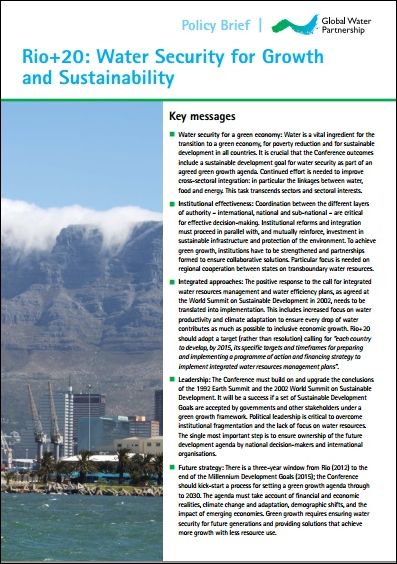 |
This Policy Brief summarizes the key messages towards the Rio+20 Conference. These messages derive from GWP work and experiences and include: the crucial role of water as a key driver in the green economy, the need for building more effective institutions to manage water better, especially at transboundary level, the ongoing need for integrated approaches, ensuring water security for the economy, for society and for the environment, and the political leadership and vision essential for overcoming fragmentation. Read: English |
|
Social Equity: The Need for an Integrated Approach (2012) |
|
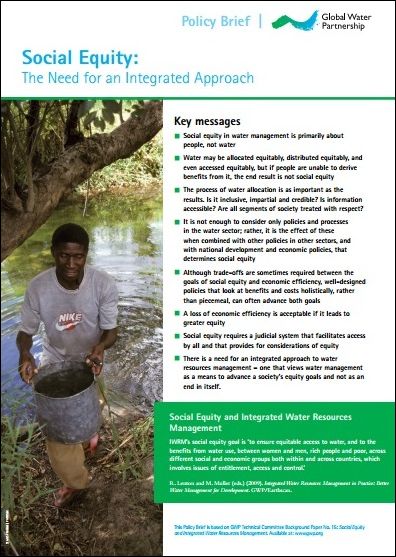 |
Social equity, economic efficiency, and environmental sustainability constitute the three pillars of Integrated Water Resources Management. As one of the goals of public water policies, equity features frequently in arguments that promote, or object to, reforms in the water sector. It also features high on the agenda in the fight against poverty. The Policy Brief provides an analytical framework that policy-makers can use to understand the relationship between water management and social equity – including causes, dynamics, consequences, and possible solutions. Read: English |
|
Managing the other side of the water cycle: Making wastewater an asset, No. 10 (2009) |
|
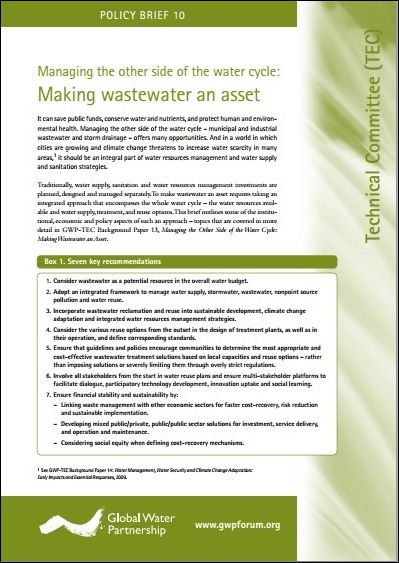 |
This policy brief makes the case for an integrated approach to managing the other side of the water cycle – municipal and industrial wastewater and storm drainage. It outlines some of the key economic, policy and institutional aspects of such an approach and provides guidance on policies and institutions needed to support water reuse. It gives a short outline of what can be the policies and institutions to support water reuse. Read: English |
|
Lessons from IWRM in Practice, No. 9 (2009) |
|
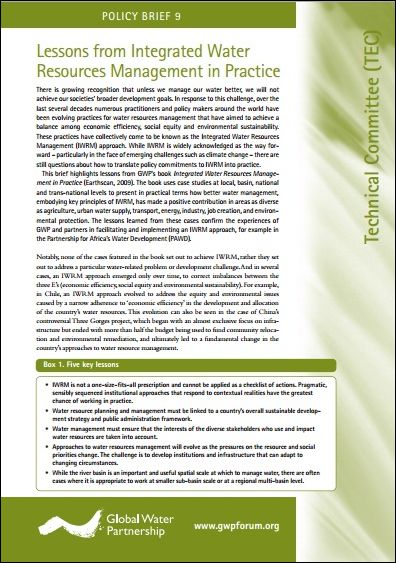 |
This brief summarizes lessons from the book IWRM in Practice (Earthscan, 2009). It seeks to help development policy makers and practitioners in different sectors to understand the principles and practice of the IWRM approach. Examples from the book using case studies at local, basin, national and trans-national levels to present in practical terms how better water management, embodying key principles of IWRM, has made a positive contribution in areas as diverse as agriculture, urban water supply, transport, energy, industry, job creation, and environmental protection. Read: English |
|
Gender mainstreaming: An essential component of sustainable water management, No. 3 (2006) |
|
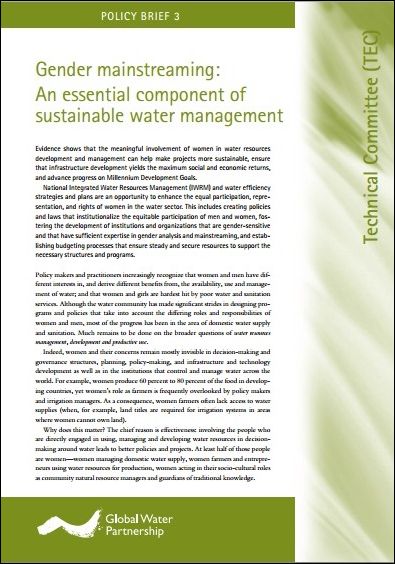 |
This brief shows the evidence that involvement of women in water resources development and management can help make projects more sustainable. Integrated Water Resources Management (IWRM) and water efficiency strategies and plans are an opportunity to enhance the equal participation, representation, and rights of women in the water sector. This includes creating policies and laws that institutionalize the equitable participation of men and women, fostering the development of institutions and organizations that are gender-sensitive and that have sufficient expertise in gender analysis and mainstreaming. Read: English |

